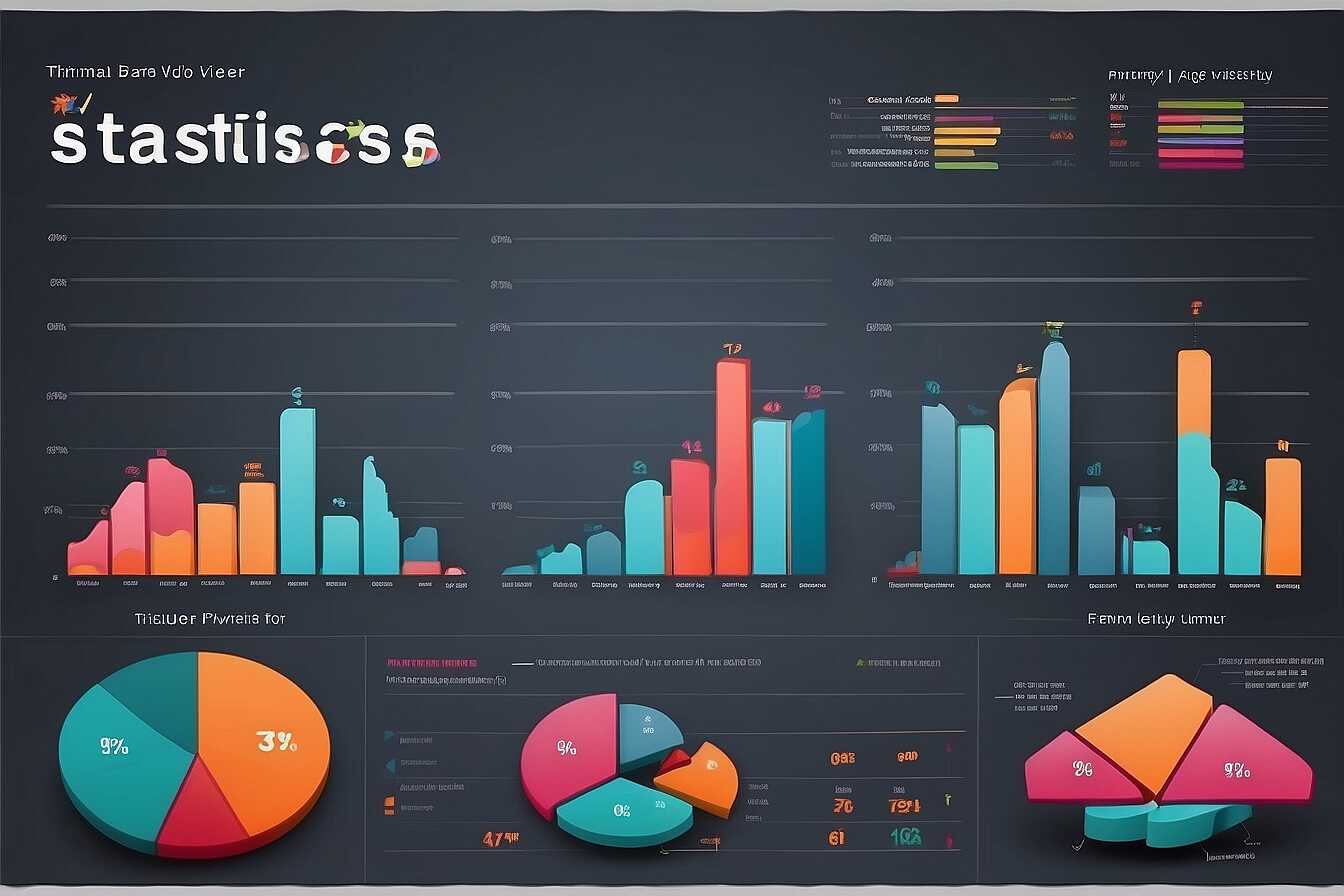To optimize your multilingual website structure for higher international SEO rankings, you need a clear strategy. A well-structured site can significantly improve your visibility across diverse markets and languages. At Metrics Rule, we understand that effective international SEO involves technical optimization, quality content, and a user-friendly design to cater to all audiences. By implementing best practices for multilingual websites, you can enhance your online presence and drive more targeted traffic globally.
Why Multilingual SEO is Essential for Global Reach
Multilingual SEO is vital for reaching diverse markets effectively. By optimizing your site for multiple languages, you enhance visibility across search engines like Google and Bing. This enables your brand to connect with international audiences, driving traffic and increasing engagement. Businesses targeting countries with different languages can significantly benefit from multilingual SEO. Generally, the more languages you incorporate, the broader your reach becomes, potentially opening doors to new customer segments. Research indicates that users are more likely to engage with content in their native language. This engagement leads to better search rankings, as search engines prioritize content that resonates with users. Ultimately, multilingual SEO provides a strategic advantage in a competitive global marketplace.
Key Benefits of Multilingual SEO
Multilingual SEO offers several key benefits that are essential for expanding your international reach. One significant advantage is enhanced search visibility, as optimized content in different languages ranks better on local search engines. This increased visibility can result in higher click-through rates and improved conversion rates. Additionally, targeting multilingual audiences allows you to create tailored content that meets the specific needs of various demographics, enhancing customer satisfaction. As more businesses embrace globalization, investing in multilingual SEO becomes crucial. In fact, 75% of consumers prefer to buy products in their native language. Metrics Rule provides expert analysis and strategies to improve your site’s performance in multilingual SEO, ensuring that you reach and engage international audiences effectively.
Fundamentals of a Well-Organized Multilingual Website
To create a reliable multilingual website structure, essential elements include a solid content hierarchy and intuitive navigation. Establishing a clear content hierarchy helps users understand and access information easily. Businesses should ensure that the website navigation is designed to accommodate diverse linguistic backgrounds, providing an efficient experience. Best practices involve using appropriate hreflang tags, accessible menus, and localized URLs to improve international SEO. It’s often best to support as many languages as your target audience requires, as this can significantly enhance user experience and engagement.
Best Practices for Localized Content and Navigation
Implementing best practices for localized content greatly enhances a multilingual website’s performance. This includes translating not just text, but also ensuring that cultural nuances are considered in the content. Structure your navigation menus to allow easy access to content in each language. Use clear and descriptive labels that are easy to understand, regardless of the user’s native language. Additionally, regularly testing your site’s navigation and content organization improves reliability and efficiency. Always use data analytics to identify areas for improvement, ensuring your multilingual site effectively meets user needs and enhances its international SEO rankings.

Evaluating URL Structures for Multilingual Websites
When structuring a multilingual website, you can choose from various URL structures, including subdomains, subdirectories, and country-specific TLDs. Each structure offers distinct pros and cons that can significantly affect your international SEO strategy. Subdomains (like es.example.com) allow easy organization of content, making it clear to users and search engines that you have dedicated pages for different languages. However, managing subdomains can become complex. Subdirectories (like example.com/es/) are simpler to handle and usually benefit from the main domain’s authority, leading to better indexing. Country-specific TLDs (like example.es) may provide local relevance but can complicate broader brand management and SEO consistency. Considering these variations, it’s essential to test and compare each structure based on your goals.
Choosing the Best URL Structure for Your Audience
To select the best URL structure for your multilingual website, evaluate how each option aligns with your target audience’s preferences. For instance, subdirectories are often the easiest for maintaining consistency and enhancing SEO performance because they inherit the main domain’s authority. In contrast, subdomains can give distinct branding for separate languages, which is beneficial. Consider conducting A/B testing to see which URLs perform better in terms of search engine visibility and user engagement. Implementing robust analytics, such as Google Analytics reports, can provide valuable data on user behavior, helping you choose the most effective structure for enhancing your international SEO.
Numerical Insights on International Website Organization
- 75% of global internet users prefer browsing local language websites.
- Over 56% of online shoppers say language influences their purchase decisions.
- Businesses that optimize for multiple languages see a 15-30% increase in traffic.
- Research shows that 80% of non-English speakers use search engines in their own language.
- Countries like China, Spain, and Germany are among the top markets for multilingual SEO.
- 90% of professional translators recommend using localized content for SEO.
- Websites with clear language structures rank higher, with some achieving top SERP positions.

The Importance of Hreflang Tags in SEO Optimization
Hreflang tags are essential for SEO optimization when creating multilingual websites. They inform search engines about the language and geographical targeting of a webpage. By implementing these tags correctly, you enhance search engine crawling and indexing of your content. Additionally, hreflang tags significantly improve user experience by ensuring that users see content in their preferred language. Research shows that 75% of users prefer content in their native language, highlighting the importance of these tags for content localization and visibility.
How Hreflang Tags Improve User Experience and SEO
Hreflang tags improve user experience by directing users to the correct language version of a site. This ensures that customers from different regions receive localized content. Implementing these tags effectively involves including specific attributes for each language version, such as “en-US” for English (United States) or “fr-FR” for French (France). Using hreflang tags also helps reduce bounce rates since users are more likely to engage with content that resonates with their cultural context. This strategy enhances overall site reliability and boosts SEO performance, making it a vital part of any multilingual site structure.

Strategies for Crafting Multilingual Content That Connects
Creating content that connects with global audiences goes beyond mere translation. It is essential to understand the differences between translation and localization. Translation focuses solely on converting words from one language to another. Localization, however, adapts content to fit cultural contexts, ensuring it resonates with the audience’s values and norms. For example, a marketing campaign that works in the U.S. might not be effective in Japan due to cultural differences. Therefore, employing cultural nuances is crucial for engaging a global audience and enhancing brand loyalty. Businesses should always aim to create a multilingual content strategy that inspires trust and connection.
Cultural Nuances and Their Importance in Global Content
Incorporating cultural nuances into your multilingual content is essential for effective global marketing. Research shows that approximately 76% of consumers prefer content in their native language during purchasing decisions. This highlights the importance of tailoring your content to not just educate but also resonate emotionally with different audiences. An effective multilingual content strategy goes beyond literal translation by considering local customs, idioms, and preferences. For instance, humor that is well-received in one culture could be completely misunderstood in another. Therefore, engaging expert localizers and conducting thorough testing can dramatically improve the performance and reception of your content among diverse audiences.
Advantages of Structuring for Multilingual Reach
- Enhanced user experience leads to higher customer satisfaction and engagement.
- Optimized site structure for various languages boosts international visibility.
- Localized content increases trust with targeted audiences and builds brand loyalty.
- Multilingual SEO offers improved rankings in country-specific search results.
- Adaptation of content to local cultures enhances your global outreach efforts.
- You can reach untapped markets, expanding your audience significantly.
- Statistics show that businesses see an increase in conversion rates with multilingual approaches.

Addressing Technical SEO Aspects for Multilingual Sites
Multilingual websites face unique technical SEO challenges, such as diverse content management and URL structure for different languages. Common issues include optimizing loading speed, as slower sites can deter international users. Research shows that 40% of users abandon websites that take longer than 3 seconds to load. Mobile responsiveness is also crucial since a mobile-friendly design significantly enhances user experience and retention. Effective schema markup implementation can improve how search engines understand and present multilingual content. Regular testing and refinement are essential to ensure these optimizations yield reliable SEO results.
Importance of Mobile Responsiveness for Multilingual SEO
Mobile responsiveness directly impacts user experience and site rankings in search engines like Google. A responsive design automatically adjusts content based on the device used, improving accessibility for diverse audiences. Verifying that images and text are properly displayed in different languages is key. Effective mobile optimization can enhance loading speeds, ensuring users have fast access to the information they seek. This is crucial for multilingual websites, where variations in language and culture can affect user interactions. Remember, better mobile responsiveness ultimately leads to higher engagement, reduced bounce rates, and improved SEO performance.
Tools and Metrics for Tracking Multilingual SEO Performance
To track multilingual SEO performance effectively, several essential tools can enhance your strategies. These include Google Analytics for tracking user engagement across languages, SEMrush for keyword monitoring in diverse regions, and Ahrefs for evaluating backlink profiles in multiple languages. Additionally, utilizing performance metrics like organic traffic by language, bounce rates, and conversion rates ensures you gauge SEO effectiveness accurately. Comparing metrics across markets helps identify which languages and regions require focused strategies for improvements. By establishing data-driven decisions through these tools and metrics, you can continuously enhance your multilingual SEO strategies.
Specific Metrics to Evaluate Multilingual SEO Success
When evaluating multilingual SEO success, focus on metrics such as organic search traffic segmented by language, conversion rates per country, and keyword rankings for different regional searches. Tracking these specific metrics provides insights into which languages are performing well and which need improvement. Use Google Search Console to monitor search visibility and index performance across various languages. Additionally, conduct A/B testing on localized content variations to measure engagement and conversion efficiency. This focused analysis helps refine your multilingual strategies and ensures that your SEO efforts are yielding the best results for your international audience.
Brands and Their Effective Multilingual Strategies
- Amazon effectively localizes content, serving multiple languages and cultures.
- Netflix adapts its video content for diverse audiences, resulting in high viewership.
- Airbnb uses localized listings, which connect better with hosts and guests worldwide.
- eBay implements global marketplaces, attracting various international buyers.
- Booking.com excels at user-friendly multilingual interfaces, enhancing usability.
- Facebook’s localized features boost engagement rates among different demographics.
- Shopify aids small businesses in reaching global audiences through localized support.
Navigating Common Multilingual SEO Pitfalls
Common challenges in multilingual SEO include managing regional keyword differences, maintaining consistent branding across languages, and ensuring that search engines can effectively crawl and index content. Brands must conduct comprehensive keyword research tailored to each target market, which helps enhance visibility. Failed attempts to optimize multilingual strategies can often be attributed to oversight in localizing content, leading to missed opportunities in search engine rankings. For example, 70% of websites struggle to achieve optimal search visibility in multilingual markets, making it essential to address these issues through careful planning and testing.
Overcoming Regional Keyword Differences
Addressing regional keyword differences is essential for effective multilingual SEO. Each region may have unique search habits and preferences, which means a keyword that performs well in one language might not resonate in another. Brands should utilize local keyword research tools to identify terms that are most effective in each market. Additionally, testing various keywords can improve content relevance and engagement. By incorporating AI-powered analytics, businesses can enhance their keyword strategies, ensuring they connect with their audience across different languages and cultures. This targeted approach not only improves search engine rankings but also boosts overall website performance and conversion rates.
